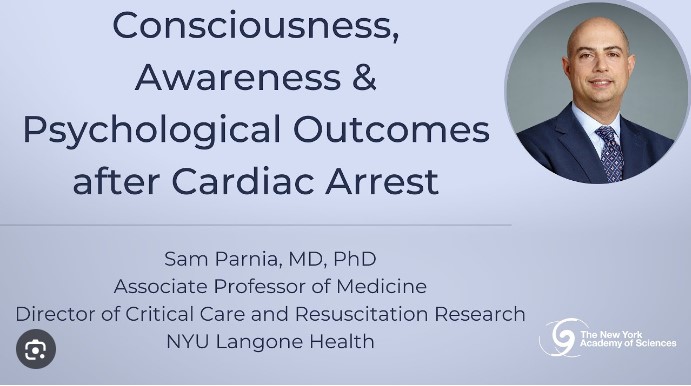Near-death experiences are those mysterious phenomena that some people report having when they are close to dying or resuscitated from death. They often involve visions of tunnels, lights, angels, deceased relatives, or life reviews. But what causes them? Scientists have many different theories, but no definitive answer.
Now Dr. Sam Parnia, a NYU Langone Health intensive care physician who has researched the phenomena for decades, offers another theory; he notes that since cardiopulmonary resuscitation–better known as CPR–was invented in 1960, millions of people have reported such experiences and he believes that there may be a connection between the resuscitation procedure and the near-death experiences.
The theories that researchers have traditionally held about the near-death experience is that they are caused by physiological changes in the brain, such as lack of oxygen, increased carbon dioxide, abnormal electrical activity, or the release of endorphins or other chemicals. These changes could alter the perception of reality and create hallucinations or illusions.
Other researchers think that near-death experiences are psychological responses to the stress of facing death, such as denial, dissociation, wishful thinking, or projection. These responses could help the person cope with the fear and pain of dying and provide comfort and hope, this theory suggests.
Still other researchers think that near-death experiences are spiritual or paranormal events that reveal the true nature of consciousness and reality. They believe that near-death experiences are evidence of the existence of a soul, an afterlife, or a higher power. They argue that near-death experiences cannot be explained by natural causes and that they have profound effects on the person’s life and worldview.
In the Parnia study, published Thursday in the journal Resuscitation, teams of trained personnel in 25 hospitals in the United States, the United Kingdom and Bulgaria followed doctors into rooms where patients were “coding” or “technically dead,” Parnia explained.

While doctors performed CPR, the research teams attached devices that measured oxygen and electrical activity to the dying person’s head.
“Resuscitation is a very tense, challenging circumstance. It’s very high intensity,” Parnia said, noting that it can last from half an hour to even an hour. “Nobody’s ever done this before, but our independent research teams were successful in carrying out the procedures without interfering in the medical care of patients.”
Brain activity was measured at two- or three-minute intervals, when doctors had to stop chest compressions or electric shocks to see if the patient’s heart would restart.
“We found the brains of people who are going through death have flatlined, which is what you would expect,” Parnia said.
“But interestingly, even up to an hour into the resuscitation, we saw spikes — the emergence of brain electrical activity, the same as I have when talking or deeply concentrating,” he added.
“We were able to show very clearly that the recorded experience of death — a sense of separation, a review of your life, going to a place that feels like home and then a recognition that you need to come back — were very consistent across people from all over the world,” Parnia said.
“We were able to conclude that the recalled experience of death is real. It occurs with death, and there’s a brain marker that we’ve identified. These electrical signals are not being produced as a trick of a dying brain, which is what a lot of critics have said.”
As with all theories, not everyone buys this one. Dr. Bruce Greyson, Carlson Professor Emeritus of Psychiatry and Neurobehavioral Sciences at the University of Virginia School of Medicine in Charlottesville, said, “This latest report of persistent brain waves after cardiac arrest has been blown out of proportion by the media. In fact, his team did not show any association between these brain waves and conscious activity.”
“That is, those patients who had near-death experiences did not show the reported brain waves, and those who did show the reported brain waves did not report near-death experiences,” Greyson told CNN via email.
“All (the study) has shown is that in some patients there is continued electrical activity in the head that occurs during the same period that other patients report having NDEs (near-death experiences),” Greyson said.
Parnia concurs—to some extent—he admits that the study was not able to match electrical activity with a near death experience in the same patient.
“Our sample size wasn’t large enough. Most of our people didn’t live so we didn’t have hundreds of survivors. That’s the reality of it,” he said. “Of those that did live and had readable electroencephalograms, 40% of them showed that their brain waves went from flatline to showing normal signs of lucidity.”
In addition, Parnia said, people who survive often have fragmented memories or forget what they experienced due to heavy sedation in intensive care.
“Absence of record doesn’t mean there’s an absence of consciousness,” Parnia said. “Ultimately, what we’re saying is, ‘This is the great unknown. We’re in uncharted territory.’ And the key thing is that these are not hallucinations. These are a real experience that emerges with death.”












